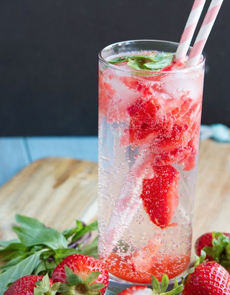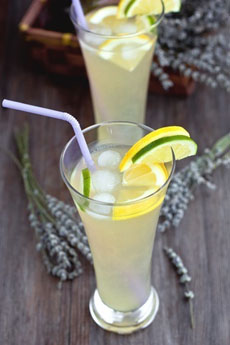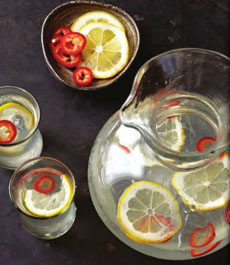|
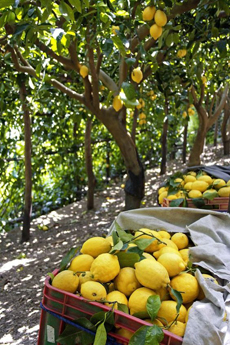
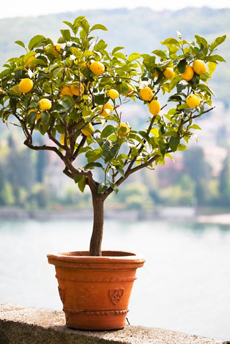
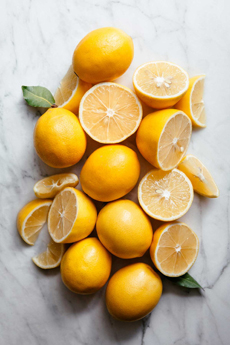
[1] A lemon grove (photo courtesy Condé Nast Traveler.[2] Ornamental lemon trees can be grown indoors (photo courtesy BrighterBlooms.com. [3] Meyer lemons, less tart than the conventional supermarket lemon (photo courtesy GoodEggs.com).
|
|
It took a while for man to turn lemons into lemonade, the quintessential American summer drink.
THE HISTORY OF LEMONADE
The origin of the lemon is still not certain, although food historians believe it may be Assam in northwestern India, where lemons have been cultivated for more than 2,500 years.
It was brought to northern Burma and to China, across Persia and the Arab world to the Mediterranean.
Arab traders brought the lemons to the Middle East and Africa sometime after 100 C.E.
They are believed to have been introduced into southern Italy around 200 C.E.; and was being cultivated in Egypt and in Sumer, the southern portion of Mesopotamia, a few centuries later.
Citron, a different citrus, looking like a larger lemon with a very thick rind and very little pulp or juice, seems to have been known by Jews before the time of Christ. References to the round, yellow fruit grown by the Romans were to citron. The lemon does not appear to have been grown in the Middle East in pre-Islamic times.
But for many centuries in the Middle East, lemons were not widely cultivated as food.
They were largely an ornamental plant in Middle Eastern gardens until about the 10th century. Arabs introduced the lemon to Spain in the 11th century, and by 1150, the lemon was widely cultivated in the Mediterranean.
The first clear written reference to the lemon tree dates from the early 10th century, in an Arabic work on farming.
Crusaders returning from Palestine brought lemons to the rest of Europe. The lemon came into full culinary use in Europe in the 15th century; the first major cultivation in Europe began in Genoa.
The name “lemon” first appeared around 1350–1400, and derives from the Middle English word limon. Limon is an Old French word, indicating that the lemon entered England via France. The Old French derives from the Italian limone, which dates back to the Arabic laymun or limun, from the Persian word limun.
Lemons came to the New World in 1493, when Christopher Columbus brought lemon seeds to Hispaniola. Spanish conquest spread the lemon throughout the New World, where it was still used mainly used as an ornamental plant, and for medicine.
Lemons were grown in California by 1751; and in the 1800s in Florida, they began to be used in cooking and flavoring. Commercial cultivation of lemons took hold in California and Florida in the 1800s.
Around 200 cultivars (distinct varieties) of lemon can be found in the U.S. alone. Some are best for lemon juice, some for lemon oil, and some are all-around. Some are more disease-resistant, some bear more fruit.
Over the millennia, many different types of lemons evolved.
One of the reasons it is difficult to trace lemon’s origin is adaptability to hybridization, as well as the vagueness of descriptions and awareness levels. A “round citron” reference may actually be a lemon, or vice versa.
Depictions of citrus fruits in Roman mosaics such as found in Carthage in Tunisia, and frescoes preserved in Pompeii, may look like lemons but are not supported by any botanical or literary evidence (source).
What we do know is that many varieties proliferated in semi-tropical climates around the world. Here’s a pictorial glossary of the different types of lemons.
And the history of lemonade?
The earliest written evidence of lemonade comes from medieval Egypt in the writings of the Persian poet and traveler Nasir-i-Khusraw (1003-ca. 1061).
|
|
Records from the medieval Jewish community in Cairo (10th-13th centuries) show that bottles of lemon juice, called qatarmizat, were heavily sweetened with sugar. An 1104 reference shows a considerable trade in exporting lemon juice.
Over the centuries, lemonade has been enhanced with fruits, herbs, spices and yes, alcohol.
National Lemonade Day is August 20th, but why wait until then to enjoy these recipes?
This recipe is adapted from Leanne Vogel of HealthfulPursuit.com, for Strawberry Basil Italian Lemonade.
Italian lemonade uses mineral water; you can use whatever water you like.
You may want to soak the basil overnight, or first thing in the morning.
|



